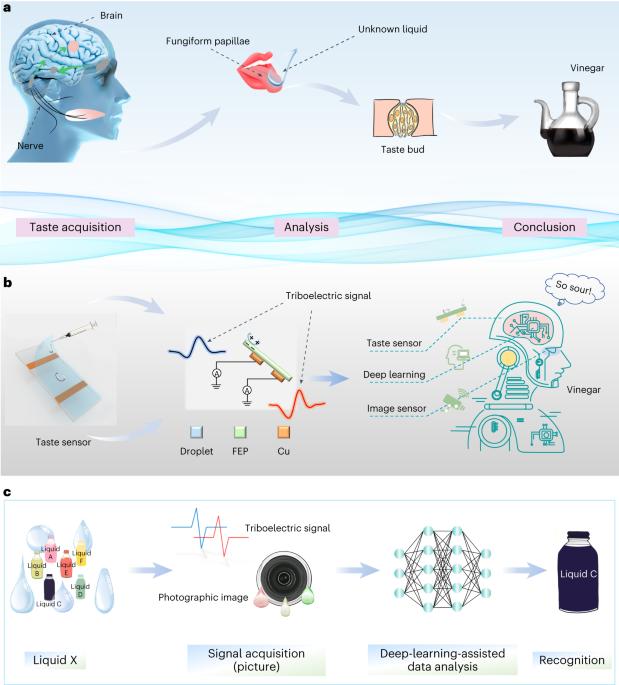Dual-sensory fusion self-powered triboelectric taste-sensing system towards effective and low-cost liquid identification
IF 21.9
Q1 FOOD SCIENCE & TECHNOLOGY
引用次数: 2
Abstract
Infusing human taste perception into smart sensing devices to mimic the processing ability of gustatory organs to perceive liquid substances remains challenging. Here we developed a self-powered droplet-tasting sensor system based on the dynamic morphological changes of droplets and liquid–solid contact electrification. The sensor system has achieved accuracies of liquid recognition higher than 90% in five different applications by combining triboelectric fingerprint signals and deep learning. Furthermore, an image sensor is integrated to extract the visual features of liquids, and the recognition capability of the liquid-sensing system is improved to up to 96.0%. The design of this dual-sensory fusion self-powered liquid-sensing system, along with the droplet-tasting sensor that can autonomously generate triboelectric signals, provides a promising technological approach for the development of effective and low-cost liquid sensing for liquid food safety identification and management. The sense of taste plays a major role in the identification and analysis of liquid food types. This study reports a droplet-based, self-powered triboelectric taste-sensing system that integrates two taste-sensing units. Combined with deep-learning data analytics and image recognition, the systems can achieve liquid recognition accuracy of up to 96.0%.

双感融合自供电摩擦电味觉传感系统,实现高效、低成本的液体识别。
将人类味觉输入智能传感设备以模拟味觉器官感知液体物质的处理能力仍然具有挑战性。在这里,我们开发了一个基于液滴动态形态变化和液固接触带电的自供电液滴品尝传感器系统。通过将摩擦电指纹信号和深度学习相结合,该传感器系统在五种不同的应用中实现了超过90%的液体识别准确率。此外,集成了图像传感器来提取液体的视觉特征,液体传感系统的识别能力提高到96.0%。这种双感融合自供电液体传感系统与能够自主产生摩擦电信号的液滴品尝传感器的设计,为开发用于液体食品安全识别和管理的有效且低成本的液体传感提供了一种有前景的技术方法。
本文章由计算机程序翻译,如有差异,请以英文原文为准。
求助全文
约1分钟内获得全文
求助全文

 求助内容:
求助内容: 应助结果提醒方式:
应助结果提醒方式:


